After four full days of crowds in Tokyo, it was time to take a break to go into the countryside. We did nothing too remote with our day trips - no more than an hour by train from Tokyo. The places we went are like holiday destinations for the locals so there is well developed infrastructure and pathed paths if you want.
May 12, 2025 MONDAY Mount Takao
NOTE: Many Museums are closed on Monday - seeing the great outdoors is good!
We boarded rapid trains to get out to Mount Takao and passed through tons of suburbs and satellite cities. It was and easy day trip, an hour of travel time, from Shinjuku to arrive at the mountain's base. We didn't want to do a super long walk so we took the chair lift up the mountain to cut half of our walking out. There is also the Takao 599 Museum at the mountains base here if you want to learn more about the area.
 |
| Giant tengu head at Takao Station. |
We passed by a cool, giant tengu head at Takao Station while heading to Takaosanguchi Station. This statue was a great introduction to our adventure ahead. This striking landmark was installed in 1978 and is about 2.4 metres tall with a 1.2 metre long nose and it weighs 18 tons. Tengu are considered guardians of Mount Takao, possessing supernatural abilities and serving as protectors of sacred sites. The statue’s exaggerated long nose is a defining feature of the Daitengu, a powerful form of Tengu known for wisdom and martial prowess. This statue at Takao Station reinforces the mountain’s spiritual significance and its long-standing connection to Tengu folklore.
Mount Takao is a beautiful natural retreat, lush and green for much of the year that offers visitors vibrant displays of seasonal beauty and panoramic views at the peak. It is possible to see Mount Fuji from the 599 metre high peak. The dense forest covering the mountain has some wild cherry blossoms in spring and fiery autumn foliage. It is home to over 1,200 species of plants and animals, it is a haven for nature lovers. There are even flying squirrels.
 |
| Chairlift going up Mount Takao. It was fun to be able to see the forest around us without any glass in the way. |
Mount Takao also holds deep spiritual significance. As with many mountains in Japan, it is considered sacred, and has been a site of pilgrimage for centuries. The revered Takaosan Yakuoin Temple was established in 744 by Emperor Shomu as a center for Buddhism in eastern Japan. Over time, it became closely associated with Shingon esoteric Buddhism and Shugendo, a form of mountain asceticism. The temple flourished under the patronage of powerful warrior lords and the ruling Tokugawa family during the Edo period.
 |
| Steep forested slopes as seen from the chairlift. |
One of the most fascinating aspects of Mount Takao is its connection to Tengu, mythical beings believed to dwell in sacred mountains. Tengu are often depicted as long-nosed, winged creatures who serve as both protectors and tricksters. Their origins trace back to early Japanese texts, including the Nihon Shoki (Chronicles of Japan) from the 8th century. Over time, their portrayal evolved, influenced by Buddhist beliefs and Chinese mythology. On Mount Takao, Tengu are seen as messengers of the deities, ensuring justice by chastising evildoers and protecting the righteous. Two prominent Tengu statues stand in front of the Izuna Gongen-do Hall, representing the Daitengu (Great Tengu) and the lesser Kotengu (Small Tengu).
Daitengu are the most recognizable tengu, depicted as human-like beings with long noses, red faces, and large wings. They are powerful and wise, often residing in sacred mountains. Daitengu are skilled in martial arts and swordsmanship, and some legends describe them as mentors to warriors. They are also believed to control the wind and cause storms.
The Kotengu or Karasutengu (Crow Tengu) are are more bird-like, often resembling crows or hawks. Unlike the noble Daitengu, Kotengu are mischievous and sometimes dangerous. They are known for trickery and causing chaos, though they also serve as protectors of forests and mountains.
 |
| Paved path up the mountain. The higher parts are not this wide, but paved. |
The main path (Trail 1) is paved and stepped, so it is a relatively easy walk to the peak from the cable car or chair lift. There is elevation, but much of the trail seems to follow ridge lines so it doesn't go up and down too much. In the pictures below it can be seen there are several sets of stairs, especially as you climb up after entering the main temple complex.
It is much cooler on the mountain than at sea level. We made the walk in about an hour of walking, but there are many places to stop for food / refreshment, washrooms, and to see various sights, especially Yakuoin Temple. Other trails up the mountain are much rougher. Cooler breezes and fresh mountain air is a great change from the hustle and bustle of Tokyo.
 |
| The area is heavily forested. |
 |
| Joshinmon Gate marking the outer boundary of the temple area. |
 |
| Takosugi (Octopus Cedar). It is said that this sacred tree moved its roots to avoid being cut down when the path was being built. |
 |
| People used to rub the cedar's roots for luck, now it is fenced off and you rub this lucky octopus statue instead! |
 |
| I call this the Path of Pain. It is officially the 108 Stairs of Tribulation. There is a fork in the path here. You can take the stairs or the Gentle Route to the right off camera and they both meet up a little further up the mountain. I chose Gentle! |
 |
| The fork showing both paths up. Harsh or Gentle? |
After a bit of further walking, you will be on a path lined with ancient cedars and then the Yakuoin Temple will appear.
 |
| The forest around the path. |
 |
| A rest stop on the way serving dango and other food and drink. There are a fair number of washrooms too. |
 |
| One of the many sacred cedars lining the path. |
LUNCH
Not much to say, we brought some konbini sandwiches, rice balls, and drinks with us for a quick and easy lunch.
Yakuo-in Temple
Yakuo-in Temple, holds a significant place in the Shingon-shu Chisan-ha Sect. It stands among the three principal temples of this sect, alongside Naritasan Shinsho-ji Temple and Kawasaki Daishi Heiken-ji Temple. The temple venerates Izuna Daigongen, an incarnation of Fudo Myo, as its primary deity. Given that Tengu are believed to be part of the Izuna Daigongen lineage, Mt. Takao has long been regarded as a spiritual dwelling for these mystical beings, reflected in the numerous statues and motifs of Tengu found throughout the temple grounds. The monks of Yakuo-in practice Shugendo, a rigorous form of mountain asceticism that integrates elements of Shingon Buddhism, Shintoism, and esoteric traditions.
 |
| Front Gatehouse to the temple grounds. |
 |
| The first large tengu statues on the mountain! Daitengu on right, lesser tengu on left. |
 |
| Apparently you can wash your money here to bring luck to it. |
 |
| Shungen Daitoku, a priest who restored the temple, bow before it and then go through the gate into the temple precinct. |
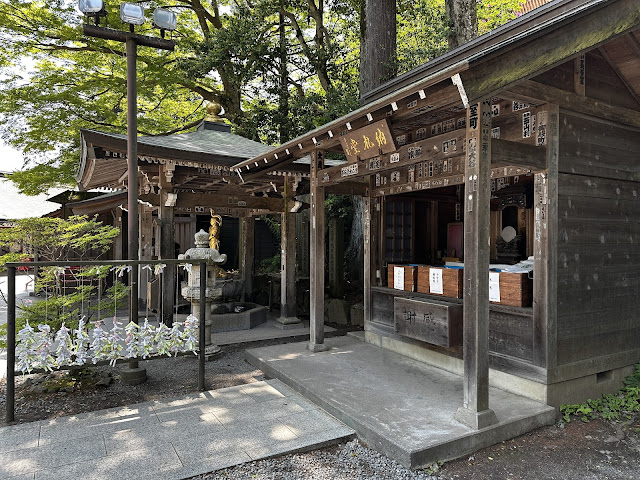 |
| Temple buildings. You can see a mix of Shinto and Buddhism here. |
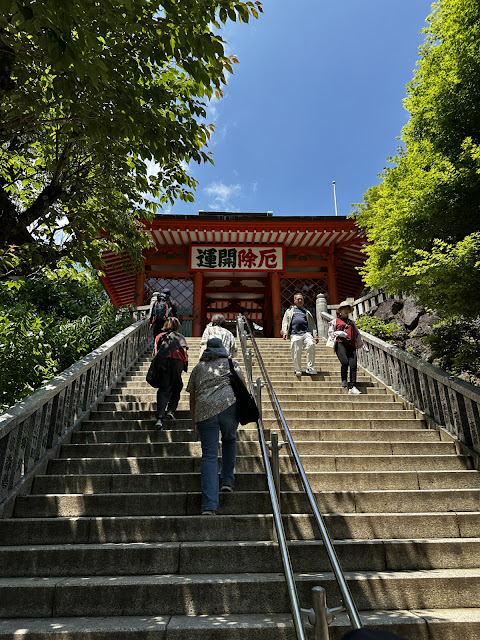 |
| More steps up to the Niomon Gate |
 |
| Beyond the Niomon Gate is the Main Hall. |
 |
| Bell Tower |
 |
| Main hall from the side. |
 |
| There were yet more stairs to the Tengusha Shrine. |
 |
| Finally we descended back the way we came and took the funicular down. |
Once back at the foot of the mountain we took the train back towards Shinjuku, but we would stop to see Gotokuji Temple. It was after 2 pm, and we had some trouble figuring out the rapid trains and it didn't help when I misread my directions and got off at the wrong station. Still, we made it to Gotokuji, but only after the office closed for the day. It closes early at 3 PM and the temple closes at 5 PM.
Gotokuji Temple
Gotokuji Temple, located in Tokyo’s Setagaya ward, is a Buddhist temple renowned as the birthplace of the maneki-neko, or beckoning cat figurine. According to legend, during the early 17th century, a cat at the temple is said to have saved a feudal lord, Ii Naotaka, by beckoning him inside just before a thunderstorm. In gratitude, Naotaka dedicated the temple to his clan, and over time, the cat became a symbol of good fortune and prosperity. This association led to the temple becoming a shrine for thousands of maneki-neko statues, which visitors leave as offerings in hopes of attracting luck. Gotokuji Temple holds deep historical and cultural significance as a Soto Zen Buddhist temple too. Originally established in the 15th century, it later became the family temple of the Ii clan, feudal lords of the Hikone domain.
We went to this famous cat shrine because we have had two cats, one of which is deceased. We wanted to get some figurines to put in prayers for both our cats, but only ended up praying for each of them at the shrine. The temple grounds are pretty and tranquil with an extensive graveyard with some famous people buried there.
 |
| Gotokuji main gate. |
 |
| Beckoning cat at the main office. |
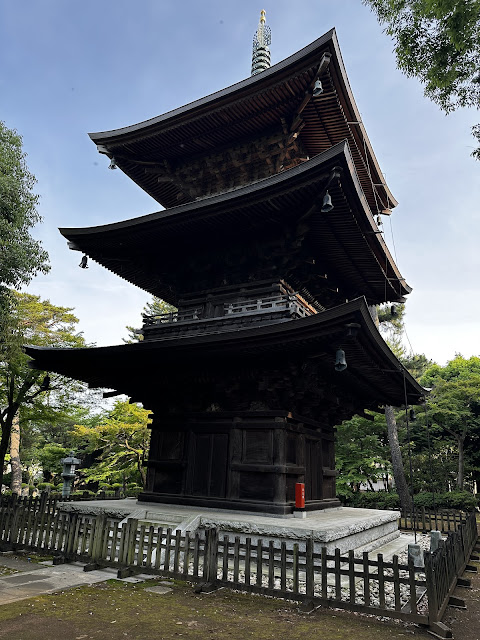 |
| Three story pagoda |
 |
| Beckoning cat at the entrance to the cat shrine. |
 |
| Cat shrine. |
 |
| There are racks and racks of beckoning cat statues of all sizes there. |
 |
| Someone has left a Doraemon statue here. I hope that the wishes get to all the cats from these offerings. |
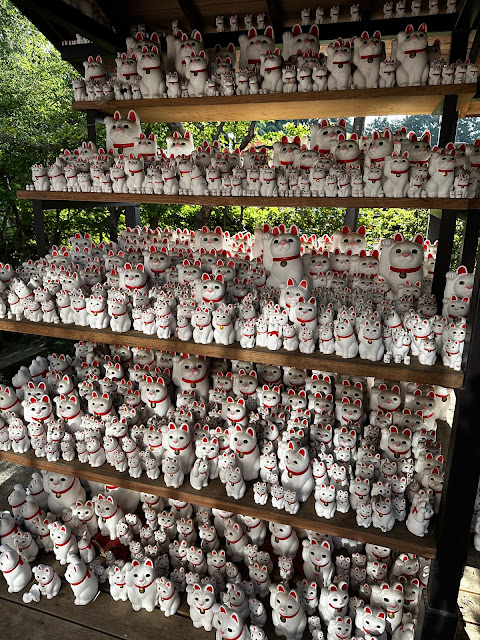 |
| More figurines. |
 |
| There are many cats and they do try to dust and keep them clean. |
 |
| Thousands of these statues. |
I guess I've always wanted to see these cat statues at this shrine as it is internet famous, but I would have loved to have left some statues behind for our cats. After this, it was a pretty long day already and it was back to Shinjuku to get some dinner and look around just a little.
Shinjuku
You pretty much have to pass through Shinjuku from the cat shrine. The trains are pretty easy to catch.
We arrive back in town just a little early for dinner which worked out well as we managed to get a table at Ootoya without any waiting. We would have gone to the Ichiran next door, but there was a huge line for it.
 |
| South side of Shinjuku Station. |
 |
| Busy Shinjuku Street on the east side. |
 |
| Kabuiki Hall, its lantern-lit food court |
 |
| Kabuki Hall |
 |
| The 3D Cat TV by the Alta Vista Building (being rebuilt). |
 |
| The giant 3D cat. |
 |
| Ootoya set meal display. |
 |
| One of our set meals, a Chicken Sukiyaki Rice Bowl. |
After dinner, it was pretty much back to the hotel and rest after a konbini stop for snacks of course.
Part 1 Shibuya, Kanda Festival, Azabudai Hills (Teamlab), Akihabara, Ueno
Part 2 Day Trip to Mount Takao, Tengu, and Gotokuji Temple
Part 3 Enoshima Day Trip and Odaiba Gundam
Part 4 Roppongi, Omotesando, Harajuku, Meiji Shrine, Shibuya
Part 5 Ikebukuro, Gashapon Store, Animate Flagship, Tokyo Station Character Street
Part 6 Asakusa and Ueno National Museum
Part 7 Artizon Musem, Shinjuku, and Godzilla
Special - Catching Wigglet At Odaiba Beach in Tokyo Bay
More Travelogues



















































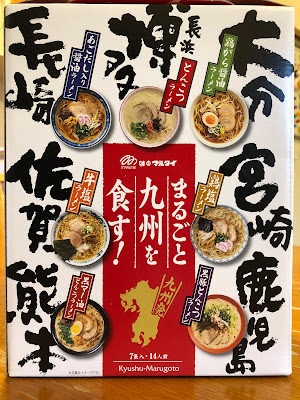

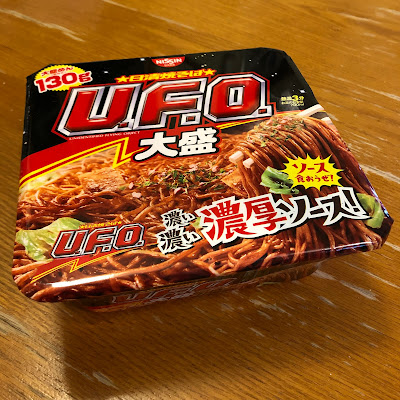


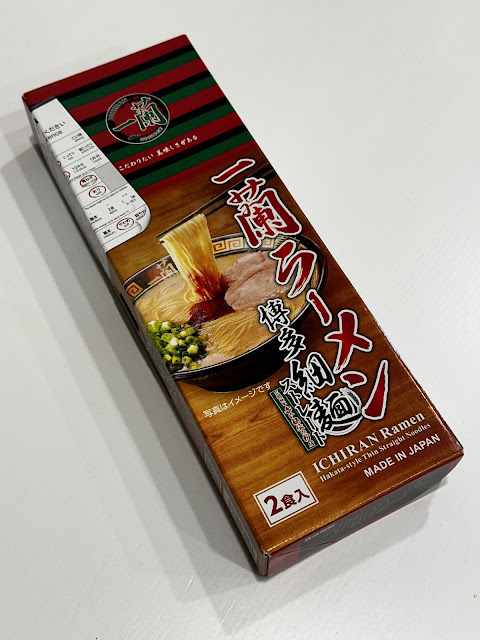
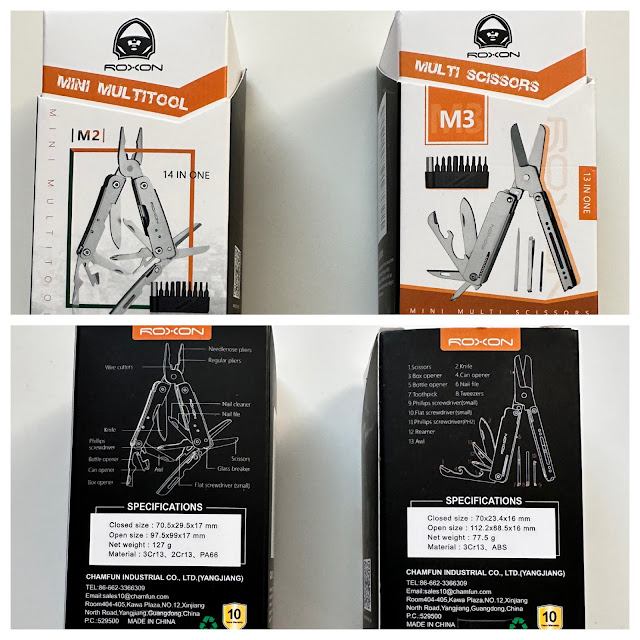


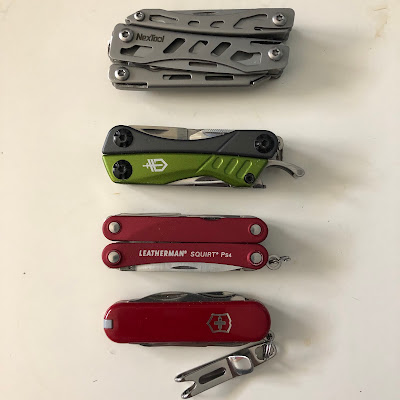
Comments
Post a Comment